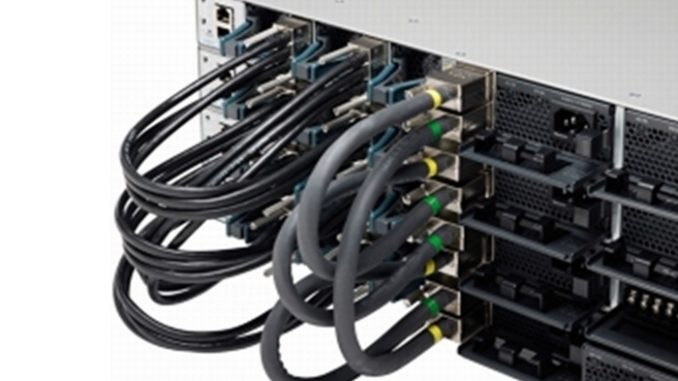
10G SFP+ high-speed cables and optical modules are common optical components for data center top-of-rack (ToR) cabling for connecting small access switches and servers. Among them, 10G SFP+ high-speed cable is a low-cost alternative to optical modules for short-distance high-speed interconnects with low power consumption and low latency. However, there are some things to note when deploying SFP+ high-speed cables in the data center.
Do not exceed the bend radius of the SFP+ high-speed cable
The weight of a large bundle of high-speed cables can cause the cables to bend and put pressure on the connectors that are plugged into the active equipment. If the high-speed cable is bent to a large extent, excessive mechanical stress is transmitted to the connector inserted in the device, damaging the circuit board of the device.
Calculate the length of the SFP+ high-speed cable
When you are deploying an SFP+ high-speed cable in an 84-inch, 45-RU cabinet, it is conservatively estimated that the cable length from the top to the bottom of the cabinet is about 2.1 m, and the cable length between the two adjacent ports is about 0.45. m. If there are two top-of-rack (ToR) switches in a cabinet and 20 servers with 2U SFP+ NICs in the cabinet, the required SFP+ high-speed cable should be 2.1+2×0.45≈3m.
Support SFP+ high-speed cable with cable management tools
In order to prevent high-speed cables from sagging due to excessive load, it is necessary to use cable management or stress relieving tools. The stress relieving tool can ensure that the bending radius of the high-speed cable is maintained within the normal range, and the path of the cable is neat and orderly; the cable management tool such as the cable tie can bundle the high-speed cable harness to the stress relieving tool. It also helps to fix the cable.
Conclusion
SFP+ high-speed cables support Ethernet, Fibre Channel, InfiniBand, SAS, and SONET/SDH devices, enabling high-density connectivity between network devices. It is a high-performance, low-cost network connectivity solution that is also economical. In-rack connection or inter-rack connection solution.
Original Article Source from https://www.optcore.net


